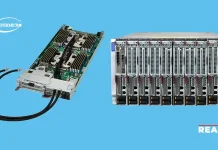The manufacturing industry, where safety and efficiency are paramount, often faces the challenge of joining metal materials efficiently. However, brazing consumables have emerged as a potent solution to address this challenge by creating a powerful and resilient bond between the metals. This comprehensive blog covers information about consumables used in the brazing process and discusses their types, components, and potential in the transportation and storage sectors.
What are Brazing Consumables?
Brazing consumables are materials used in the brazing process, which involves binding two metal parts together using a filler metal or flux with a lower melting point that can drift into the joint. These consumables play a crucial role in creating a strong bond between the metals being joined. Some common brazing materials include silver, copper, and zinc-based filler metals. As brazing is widely used in a range of manufacturing processes, Extrapolate states that the brazing consumables market is expected to accrue a valuation of $22.12 billion by 2028.
Exploring the Key Components of Brazing
The brazing process uses several components for joining metals. The key components of brazing include:
● Base Metals
The metals to be joined together are referred to as the base metals. It includes metals such as brass, copper, stainless steel, aluminum, zinc-coated steel, and ceramics.
● Filler Metal
The filler metal is a metal alloy with a lower melting point than the base metals. It is used to join the base metals together.
● Flux
Flux is a chemical compound utilized during brazing to prevent oxidation and contamination of the base and filler metals. Fluxes commonly used in brazing include borates, fluoborates, fluorides, chlorides, borax, and boric acid.
● Heat Source
A heat source is used in brazing, such as a torch or a furnace, to heat the base metals and the filler metal to the required temperature for brazing.
● Capillary Action
Capillary action is the phenomenon that allows the molten filler metal to flow into the joint between the base metals.
Understanding 4 Main Types of Brazing Consumables
Consumables used in brazing are categorized based on their applications and brazing methods. The four types of consumables used in this process include:
- Silver Alloys: Silver alloys, such as silver-copper or silver-copper-zinc, are suitable for brazing due to their melting range of 600 to 850°C. They provide a clean finish and strong ductile joints.
- Copper-Phosphorus and Copper-Phosphorus-Silver: Copper-phosphorus and copper-phosphorus-silver brazing materials, such as PHOSBRAZ, are commonly used. These alloys are suitable for a wide range of applications and can be used in coating and packaging.
- Titanium, Zirconium, Hafnium, and Vanadium: These filler materials are best suited for brazing ceramics.
4. Silver and Copper-based Brazes: Silver and copper-based brazes are ideal for making electrical connections as they provide excellent thermal and electrical conductivity.
How are Brazing Consumables Ensuring Spacecraft Safety?
The space industry faces several challenges, such as the complexity of spacecraft production and the high costs and safety of vehicle launches, which ultimately slow down industry growth. However, the use of the brazing process in space vehicle manufacturing can address this issue by improving safety and cost. To make this possible, NASA plans to use brazing-based braze alloys on its Space Launch System (SLS), a vehicle planned to take a crewed mission to Mars.
Brazed alloys in space equipment allow sensors to be mounted close to engines, enabling accurate data readings and monitoring of fuel efficiency, temperature, gas flow, and fire detection. A wide range of brazed alloys can be used in ceramic sensors to resist corrosion and high temperatures. Additionally, brazing technology, especially with aluminum alloys, is being studied for capillary flow, interface reactions, and bubble formation during solidification in microgravity.
Innovative Brazing Flux Technology to Boost Solar Energy
Solar, including photovoltaics, is the fastest-growing energy source in the world and could deliver more than 30% of the world’s energy supply by 2040. Honeywell Advanced Materials is utilizing its jet printing technology for controlled atmosphere brazing of aluminum to strengthen the lifespan, efficiency, and solar collection capabilities of solar panels.
Honeywell Jet Applied Brazing Flux technology is being used in PV-T (photovoltaic thermal) solar panels designed by Tyll Solar to resolve the problem of waste, weight addition, contamination, and corrosion of coolant flow channels, which results in compromise to panel lifespan. The technology prevents hard sediment formation in process equipment and blocks jet nozzles. The technology is useful for various applications, including heaters, radiators, and powertrain cooling components in electrical vehicles. This cooling capability ensures increased efficiency, and the highest possible drive range, especially in prolonging life for EV batteries.
Bottom Line
Brazing consumables have proven to be essential in the brazing process, providing the necessary methods and tools for achieving strong and reliable joints. Whether it’s fluxes, filler metals, or alloys, each component contributes to the success of the brazing operation.
By carefully selecting suitable types of consumables and procedures, manufacturers can ensure high-quality results and meet the demands of various industries. With continuous advancements in brazing technology, these consumables are playing a vital role in spacecraft and EVs. The future of the consumables used in baring looks promising, offering even more efficient and innovative solutions.
Browse More Posts:-
Automation Testing Market
Solar Power Market
Fuel Cell Technology Market
Hydropower Market




